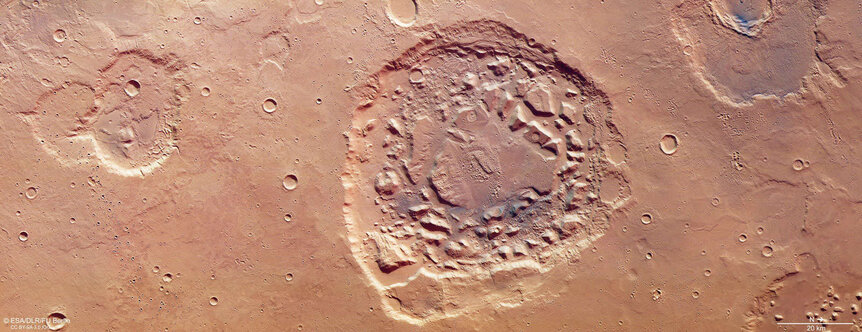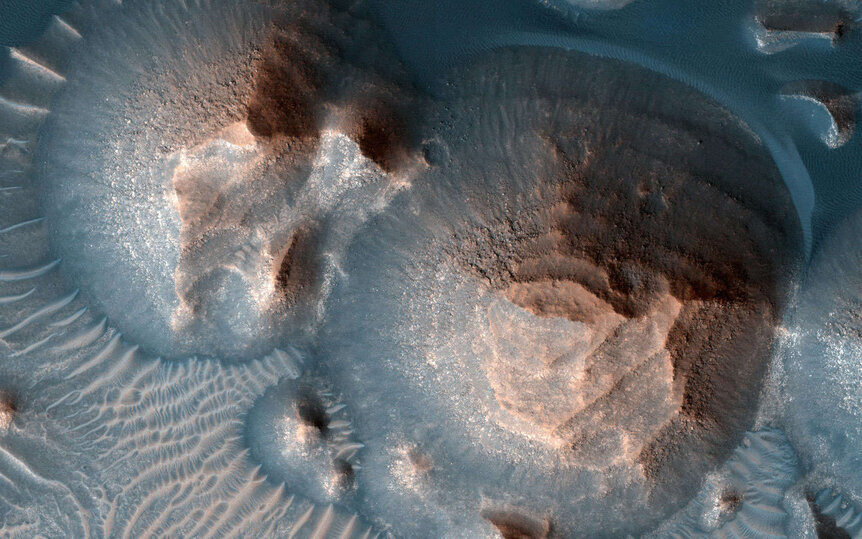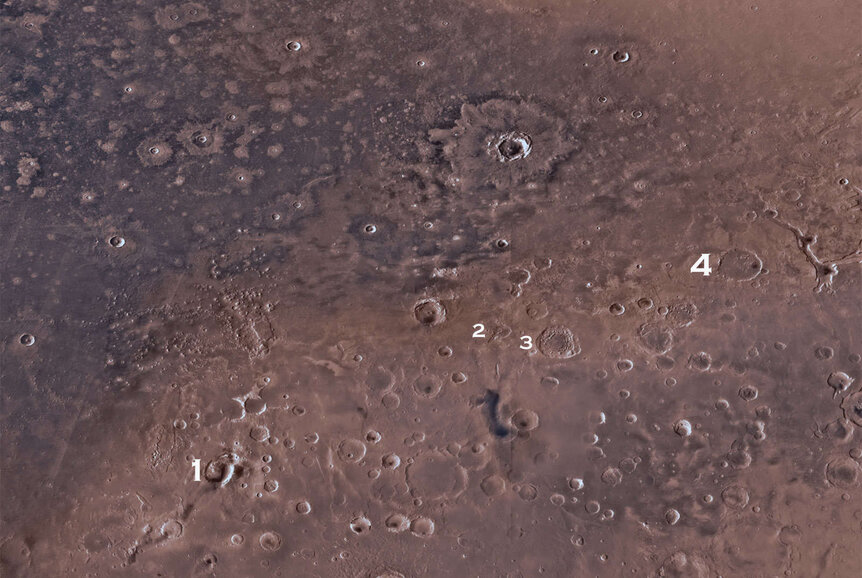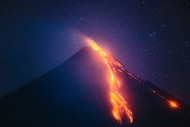Create a free profile to get unlimited access to exclusive videos, sweepstakes, and more!
Forget Yellowstone: Thousands of immense supervolcano eruptions buried much of ancient Mars
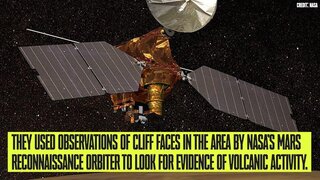
In one of the single most terrifying articles I have ever read, planetary scientists show that ancient Mars suffered from immense, repeated supervolcano eruptions that buried a huge region under ash as deep as a kilometer, and that these eruptions are tied to vast calderas in a specific spot on the planet.
These supervolcanoes erupted between 1,000 to 2,000 times over a 500 million year period, an apocalyptic era in the Martian past called the late Noachian/early Hesperian, about 3.7 billion years ago. To give you a sense of how profound this was, this period was a transition between the warmer, wetter Mars and the dry, cold desert we see today. It was a time of vast, planet-spanning change.
Arabia Terra is a huge region on Mars, up to 4,500 kilometers across (roughly as wide as the continental US), and terribly ancient. It’s an upland area (high elevation) that’s heavily eroded. It’s also littered with craters big and small, almost — almost — all of them from asteroid and comet impacts billions of years ago.
The northern part of Arabia Terra is where it meets Acidalia Planitia, a vast lowland plains. There have been suggestions of volcanic deposits in this area in the past, but the problem with that is that the area is huge, suggesting truly enormous volcanic activity, and no volcanic vents have been identified that could be tied to these eruptions.
In a paper recently published, planetary scientists looked for evidence of supervolcano activity — where a single explosive event erupts out more than 1,000 cubic kilometers of material. To give you a sense of scale, an eruption of an Indonesian volcano in 1257 A.D. caused vast regional damage and left traces across Earth; that eruption was approximately 7.5 cubic kilometers of material. The Martian supereruptions were well over 100 times larger.
They used observations of cliff faces in the area by NASA’s Mars Reconnaissance Orbiter to look for evidence of volcanic activity. Wind would carry the erupted ash across the region, where it would have been deposited in layers as more eruptions occurred. Cracks in the surface that opened up after the eruptions can be a kilometer or more deep, exposing those layers, and spectra taken can then be used to identify the minerals in those layers.
They found seven locations across Arabia Terra that were structurally and mineralogically distinct, where cliff layers showed evidence of huge deposits from ash eruptions. That’s not terribly surprising, but it’s the amount and distribution that’s compelling: The thickness of the volcanic layering appears to be greatest (~1 km deep) centered on a broad area at the northern part of Arabia Terra, and thins the farther out it goes, to about 100 meters deep several thousand kilometers away.
Mind you, a deposit a mere 100 meters deep would still bury a 30-story building, so these are staggeringly huge eruptions, able to drop that much material a continent away.
The scientists looked for potential supervolcanoes in that area where the deposits were thickest, and found several potential culprits that had been previously identified as possible calderas — the depression that forms in a volcano after an eruption causes it to collapse — in work done earlier by a team of scientists. Some of these features include Eden Patera, Oxus Patera, Ismenia Patera, and Semeykin crater (patera means “dish” due to them being wide and deep bowls). The craters themselves are dozens of kilometers wide, and the surrounding flanks can be well over 100. These are huge structures.
How much material was erupted out in total? This is the part that sent a chill down my spine: They estimate the total deposits in the region as over 10 million cubic kilometers. Ten. MILLION. That’s enough to bury the entire United States under a kilometer of material. The whole country. Including Alaska.
After a supervolcano eruption, the collapse leaves a large depression in the surface. They found the average patera depression was about 3,300 cubic kilometers. Assuming that’s the volume of any given eruption and given the density of magma and tephra (rock and ash) blown out, the scientists find that it would take 1,000 – 2,000 such eruptions during that 500 million year period of activity to create the deposits seen in Arabia Terra.
And that is when my brain leapt out of my head and started running around in circles screaming incoherently.
That’s very roughly the same eruption cycle length (some hundreds of thousands of years between events) as the Yellowstone supervolcano, and by volume roughly the same eruptive size in a single event, too. I’ve read quite a bit about what a Yellowstone supereruption would do (for example, in Colorado, where I live, it would drop about a meter of ash), and to think of this happening thousands of times is more than my brain can handle. It’s too much.
And I know, that’s rather funny for someone who is used to thinking about supernovae and gamma-ray bursts that dwarf such a supervolcano into quantum nonexistence. But those are remote cosmic events, internalized as numbers more than in real terms. A volcano eruption is something that is more on a human scale, though towering over it at the very highest end. The visceral impact is far larger.
I have observed Mars countless times by eye and through a telescope, and read so many articles about its nature past and present that I’ve lost track. But I still need that kick in the pants every now and again, that reminder that Mars is an entire world, capable of wonders and magnificent vistas and fascinating scientific discoveries and also violence on a nearly incomprehensible scale.
